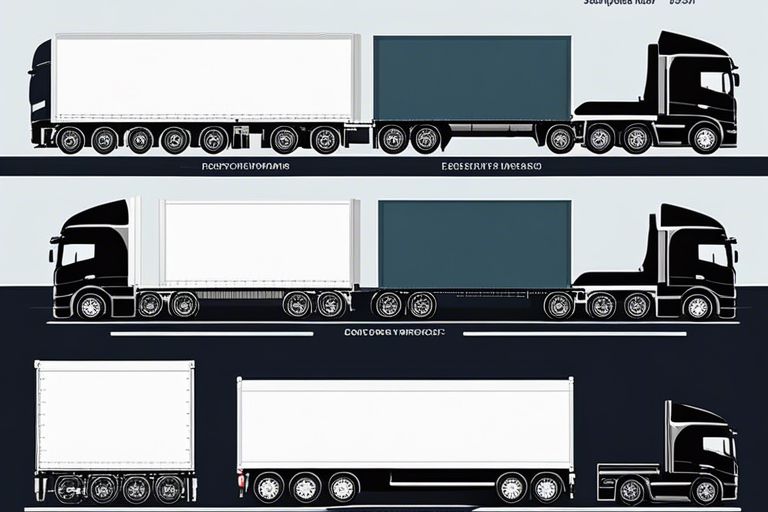Quintessentially, the use of demolition charges has become an indispensable part of modern day construction and destruction projects. In an era where buildings are taller, structures are more complex, and safety is paramount, you may be wondering if demolition charges are indeed necessary for your project. In this blog post, we will delve into the world of modern demolition, examining the pros and cons of using explosives in your construction and demolition plans. Whether you are a contractor, developer, or simply interested in the industry, this post will provide you with the essential insight into the use of demolition charges in today’s projects.
Demolition Charges and Methods
When it comes to demolition, the use of charges is a crucial aspect of the process. In today’s projects, the use of demolition charges is not only common but often mandatory to ensure the safe and efficient destruction of structures. In this chapter, we will explore the various demolition charges and methods used in modern projects, as well as their benefits and potential risks.
Traditional Explosive Demolition Techniques
Traditional explosive demolition techniques involve the use of dynamite, shaped charges, and other explosive materials to bring down structures. This method is highly effective and efficient, allowing for precise control over the direction and impact of the demolition. However, it is also inherently dangerous and requires careful planning and execution to avoid any potential hazards. It is important to adhere to strict safety protocols and obtain the necessary permits and clearances before using traditional explosive demolition techniques. If you are considering this method, it is essential to engage the services of experienced professionals who are well-versed in handling explosive materials. For more information on the military application of explosive demolition techniques, you can refer to the Military Operations on Urbanized Terrain (MOUT) guide.
Innovative Non-Explosive Demolition Approaches
On the other hand, innovative non-explosive demolition approaches offer alternative methods for bringing down structures without the use of traditional explosives. These methods may include hydraulic breakers, wrecking balls, and high-reach excavators, among others. While these approaches eliminate the risks associated with explosive materials, they may require more time and labour to achieve the desired results. Nonetheless, advancements in technology have led to the development of more efficient and powerful non-explosive demolition techniques, making them a viable option for various projects. When considering non-explosive demolition approaches, it is crucial to assess the specific requirements of your project and consult with experts to determine the most suitable method for achieving your demolition goals.
Evaluating the Necessity of Demolition Charges
When considering the use of demolition charges in modern construction projects, it is important to evaluate their necessity. This assessment should take into account various factors such as safety concerns, environmental impact, and the overall efficiency of the demolition process. Let’s delve deeper into these aspects to determine whether demolition charges are mandatory in today’s projects.
Safety Concerns and Risk Assessment
Ensuring safety should always be a top priority in any construction project. When it comes to the use of demolition charges, you must consider the potential risks and hazards involved. This includes assessing the structural integrity of the building, the proximity of surrounding structures, and the presence of any hazardous materials. Conducting a thorough risk assessment will help you identify and mitigate any potential dangers, ensuring the safety of everyone involved in the project.
Environmental Impact of Demolition Charges
Another crucial aspect to consider is the environmental impact of using demolition charges. As a responsible professional, it is important to be mindful of the potential consequences of such actions on the surrounding environment. You should take into account factors such as noise and air pollution, as well as the proper disposal of debris and hazardous materials. It is imperative to adhere to strict guidelines for the protection of the environment during demolition activities. You can find further information on this in the document here.
Case Studies: Demolition Charges in Action
Demolition charges have been an integral part of modern construction and demolition projects, proving to be essential in bringing down structures efficiently and safely. Below are some case studies that demonstrate the successful use of demolition charges in various projects:
- Case Study 1: A 30-storey building demolished in 10 seconds using controlled demolition charges. FM 3-34.214 (FM 5-250) EXPLOSIVES AND …
- Case Study 2: Bridge demolition completed in 24 hours, minimizing disruption to surrounding traffic and environment.
- Case Study 3: Industrial plant deconstruction achieved with 95% of the debris recycled for sustainability.
Successful Implementation in Urban Settings
Implementing demolition charges in urban settings can be challenging due to the proximity of surrounding structures and the need to minimize disruption to city life. However, with careful planning and precise execution, demolition charges have been successfully used in densely populated areas. By employing advanced techniques, such as directional blasting and using explosives engineered for urban environments, you can achieve controlled demolition within confined spaces, ensuring the safety of nearby buildings and the public.
Challenges and Solutions in Sensitive Areas
When dealing with sensitive areas such as historical sites or areas with strict environmental regulations, the use of demolition charges requires meticulous attention to detail. It is crucial to conduct thorough risk assessments and adopt innovative techniques to reduce noise and vibration that could potentially cause damage to nearby structures. Moreover, incorporating environmentally friendly explosives and implementing stringent safety measures are essential for mitigating the impact on the surroundings.
“`html
Alternatives to Demolition Charges
When considering modern demolition projects, it’s important to explore alternatives to traditional demolition charges. Not only can these alternatives be more cost-effective, but they can also offer a safer and more environmentally friendly approach to demolition. In this chapter, we will discuss some of the cutting-edge demolition technologies as well as economic and regulatory considerations for alternatives to demolition charges.
Cutting-Edge Demolition Technologies
One alternative to traditional demolition charges is the use of cutting-edge demolition technologies. These technologies utilise advanced machinery and equipment to dismantle structures in a controlled manner. For example, robotic demolition allows for precise and targeted dismantling of buildings, reducing the risk of accidental damage to surrounding structures. Additionally, drones equipped with demolition tools can be used to reach areas that are difficult to access, making the demolition process more efficient and cost-effective.
Economic and Regulatory Considerations for Alternatives
When exploring alternatives to demolition charges, it’s important to consider the economic and regulatory implications. For example, the use of advanced demolition technologies may require initial investment in specialised equipment. However, in the long run, these technologies can lead to cost savings by reducing the need for manual labour and minimising the risk of accidents. Furthermore, regulatory bodies may have specific requirements for alternative demolition methods, so it’s crucial to ensure compliance with regulations to avoid potential legal and financial repercussions.
“`
Modern Destruction – Are Demolition Charges Mandatory in Today’s Projects?
Presently, there is no universal mandate requiring the use of demolition charges in modern construction projects. However, many construction and demolition experts argue that the use of demolition charges can significantly increase the efficiency, safety, and cost-effectiveness of demolition projects. Whether or not you choose to utilise demolition charges will depend on the specific needs and requirements of your project, but it is important to consider the potential benefits they can offer.
FAQ
Q: Are demolition charges mandatory in today’s projects?
A: In modern construction and demolition projects, the use of demolition charges is not mandatory. There are various methods and technologies available for demolition, and the use of charges depends on the specific requirements and conditions of the project.
Q: What are the alternatives to demolition charges?
A: Alternatives to demolition charges include mechanical demolition using heavy machinery, implosion techniques, and selective dismantling. Each method has its own advantages and is chosen based on the specific needs of the project.
Q: When are demolition charges typically used?
A: Demolition charges are typically used in projects where conventional methods are not feasible or efficient. They are often used in urban environments where space is limited, or in cases where the structure needs to be demolished quickly and efficiently.
Q: What are the advantages of using demolition charges?
A: The use of demolition charges can result in quick and efficient demolition, minimal disruption to surrounding areas, and the ability to bring down large structures in a controlled manner. It can also be cost-effective in certain situations.
Q: What are the risks associated with using demolition charges?
A: The use of demolition charges carries risks such as structural damage to surrounding buildings, safety hazards to nearby people and property, and environmental impact. Therefore, thorough planning and expertise are essential when using demolition charges.
Q: How is the decision made to use demolition charges in a project?
A: The decision to use demolition charges is made after a careful assessment of the project requirements, site conditions, safety considerations, and regulatory compliance. It is typically made by experienced demolition professionals in consultation with project stakeholders.
Q: What regulations govern the use of demolition charges in construction projects?
A: The use of demolition charges is subject to stringent regulations and codes that vary by jurisdiction. These regulations cover safety procedures, environmental impact assessments, permits, and notifications to authorities and the public. It is crucial to comply with these regulations to ensure the safe and legal use of demolition charges in construction projects.







